Wellington’s Café Culture: the Visual Guide
“Coffee’s done more for cities in the past 25 years than architecture’s done in the past 150.” (Sir Ian Athfield, 1940 – 2015)
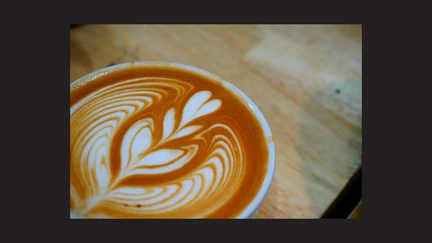
Since Wellington was established, coffee has had a long and lasting impact on the city. What is likely to have been our first prototype café appeared in early May 1840 when James Allen opened his coffee shop at the southern end of Lambton Quay only weeks after the settlement had shifted from its original location in Petone. Though tea and beer were the dominant beverages consumed for most of our history, coffee was always present though its popularity would wax and wane over the decades.
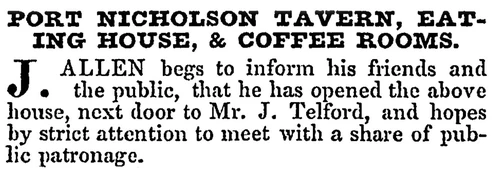
James Allen opened one of Wellington's first coffee outlets on Lambton Quay only three months after the signing of the Treaty of Waitangi. NZ Gazette and Wellington Spectator, 9th May 1840.

The French Maid Café on Lambton Quay was typical of Wellington's café scene in the immediate post-war period, but with a nod to changing times, it also featured original art on its walls which could be purchased by customers. Photo from the Evening Post, August 1951. ATL Ref : 114/335/02-G
Espresso machines made a brief appearance in the 1950s when new cafés (often established by recent European migrants) started to build on an interest in coffee that in-part had been kick-started by the thousands of American servicemen who passed through Wellington during the war. However, these large, hissing, manually operated piston machines frightened authorities so much that some owners were required to take out special insurance in case of a boiler explosion. Knowledgeable service technicians were also few on the ground and spare parts were difficult to obtain for these early commercial machines which required constant maintenance. The supply of parts almost completely dried up due to import restrictions imposed following Arnold Nordmeyer’s infamous ‘Black Budget’ of 1957 and one by one they fell silent. Simpler types of coffee such as filtered ‘cona’ and percolated coffee became dominant forms served in Wellington’s ‘coffee lounges’ through to the end of the 1970s.
Things began to change in the mid-1980s when a small number of cafés installed modern electric pump-driven espresso machines (often misspelt "expresso" in this era) following the easing of import restrictions by the new Labour government and cappuccino became especially popular among the ‘yuppie’ set. This set the scene for what was to become a revolution in hospitality which began in the late 1980s and exploded the following decade. Demographics had a significant part to play in the process as the Baby Boomers gave way to the new Generation Xers as the driver of change. Wellington’s economy had been sluggish in the period after the 1987 share market crash but this also resulted in inner-city commercial space often becoming available at low rent as landlords looked for new businesses to move into ground-floor tenancies. Meanwhile, the decades up to the 1990s had seen the inner-city residential population crash with fewer than 900 people residing in Te Aro in 1990 after years of drift to the suburbs. But vacant inner-city offices, warehouses and workshops started to be occupied by young people who returned to the area and began converting them (often illegally) into cheap improvised apartments and the area began to hum.
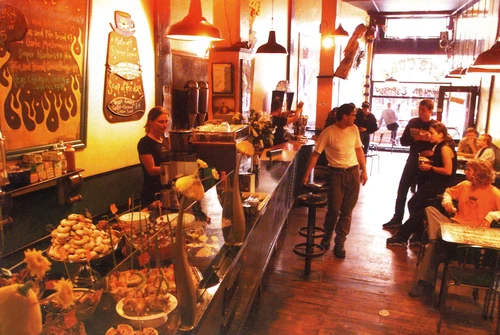
Pioneering establishment from the 'new wave' of café culture in Wellington, 'Midnight Espresso' has been a stalwart of the capital's coffee scene since it opened in Cuba Street in 1988. Photo by Mikee Tucker from Wellington's Café Culture : the Visual Guide
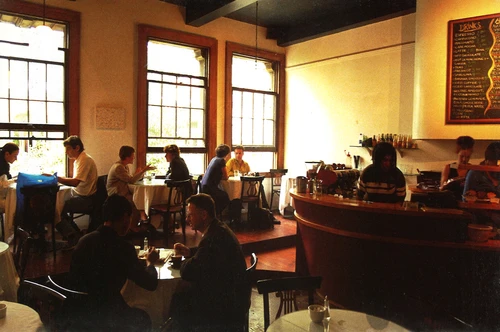
Silos Café was connect to The Vault design store located on the 1st floor of 50 Willis Street. The building was demolished (excluding the façade) in 2008 for the development of the Spark headquarters. Photo by John McGough from Wellington's Café Culture : the Visual Guide
Entrepreneurs began to establish a new wave of cafés to service the revived urban population and coffee became the drink of choice as something that could be consumed at any time of the day or night. Menus expanded with new food options that extended well beyond the traditional ‘coffee lounge’ fare of sandwiches and pies. With the new cafés came the coffee roasters, providing freshly-roasted beans to businesses on a daily basis, something unheard of in previous decades when beans could often be weeks old before they were brewed into coffee. Within a short time, the new culture moved beyond Te Aro’s alternative scene to the office workers of Lambton Quay and business meetings shifted from formal boardrooms and gentlemen’s clubs to casual cafés. What particularly marked this new generation of cafés from previous eras was the rise of a uniquely New Zealand vernacular style of interior design. Some cafés revelled in their ‘grittiness’, sporting graffiti decorated tables, concrete floors and exposed brick walls. Others sought out local architects to create cool post-modern designs using innovative building materials and new technology such as low-voltage halogen lighting.
In 1998, local publishing stalwarts Mark Cubey and Mikee Tucker of Swarm Ltd were approached by William Watson of Capital Promotions with an idea for a book that would feature the cafés that were becoming such an important part of Wellington’s urban life. At the time Swarm was establishing Loop magazine so was ‘plugged in’ to what was happening in the city and quickly recognised the potential of Watson’s idea. The result was an A5 sized ring-bound publication: Wellington’s Café Culture: the Visual Guide. As noted in the introduction, this was the first book of its kind devoted to the region's cafés and the culture associated with them. Participating establishments paid a fee to receive a full-page colour photograph alongside a text profile, an opportunity to share their philosophy and a menu selection. Other cafés were able to pay a smaller fee to be included to a text-only listing at the end of the book. Released in early 1999, it sold well but its production costs were high. Only about two of the photographs were taken using digital cameras (a technology which was in its infancy at the time) and considerable effort was was required in the soliciting of copy, advertising sales, editing text and coordinating the output of more than 20 photographers. Printing costs were also high in an era before short-run off-shore printing was a practical proposition.
When viewed today more than two decades after publication, the book offers a nostalgic vision of the capital city on the cusp of the new millennium. Of the 52 cafés featured, only five remain operating under the same name and location; Deluxe, Fidel’s, Pravda, Level 4 Espresso in Te Papa, and the pioneering Midnight Espresso which played a huge part in kick-starting Wellington’s revolution in café culture when it opened in 1988.
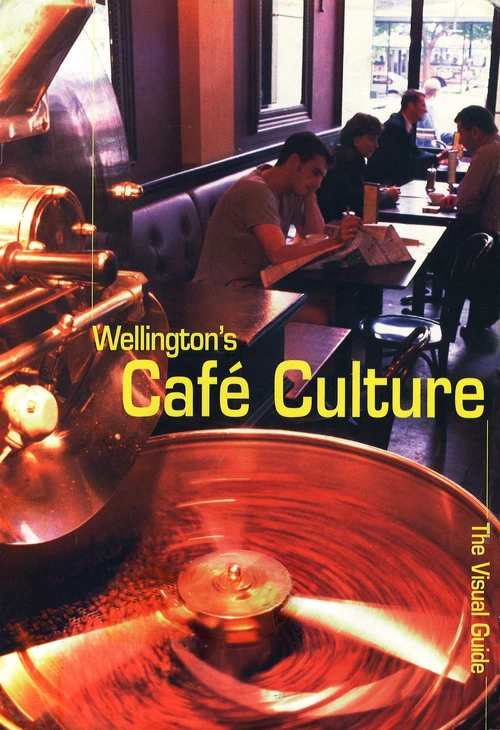
Wellington's Café Culture : the Visual Guide has now been fully digitised and is available to read on our heritage platform, Wellington City Recollect